Deformation apparatus
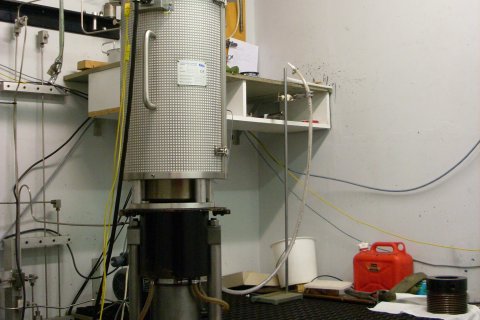
Triaxial compression apparatus (Heard apparatus)
This machine consists of an externally heated triaxial testing machine, with silicone oil as the confining medium, linked to logging and several pressure control systems. The main features of the apparatus are a main pressure vessel, containing the sample, a linked auxiliary pressure vessel, and a load transmitting yoke/piston assembly driven by a motor/gearbox/ball-screw system. Furthermore, the set-up is equipped with a pore fluid pressure control system plus sample dilatometry and permeametry systems (gas, transient step and liquid-steady state flow through). CO2 pressure control occurs via an ISCO 65D servo controlled pump system.
The Heard triaxial apparatus is suited for axi-symmetric compression testing of cylindrical samples at confining pressures up to 100 MPa, and temperatures up to 400 °C, either at constant stress (creep tests) or constant strain rate (10-4-10-7 s-1). In addition, it is possible to perform stress stepping and relaxation tests, as well as strain rate stepping tests. This machine has been used to study subsurface CO2 mineralisation and fault rock permeability.
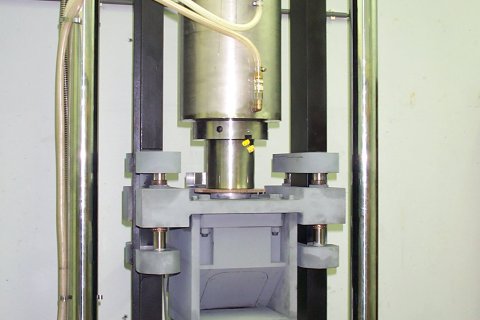
Rotary shear apparatus
This machine is located in an Instron 1362 testing machine for normal stress control. The ring shear machine can be used for shear experiments with a temperature up to about 700 °C, normal stresses up to 300 MPa, shear velocities in the range from 3 nm/s up to 0.3 mm/s, a pore fluid pressure up to 200 MPa and ultrahigh shear strains beyond 100. Currently, this machine is used for the research projects described under fault mechanics.
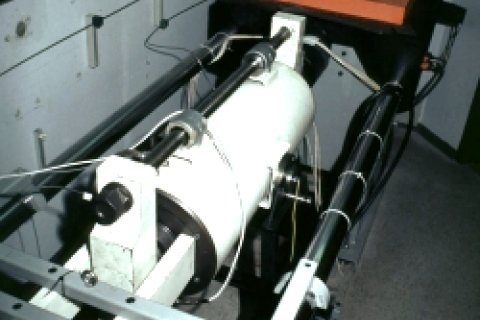
Gas medium, high precision servo-controlled triaxial testing machine (gas apparatus)
This internally heated machine can generate pressures up to 1 GPa and temperatures up to 1200 °C. Additional differential loading may be applied via an Instron loading frame to deform materials under lower crustal to upper mantle conditions. Typical applications involve studies of rock rheology and deformation mechanisms at high pressure and temperatures. Recently, it has been used to constrain the strain-dependent rheological behaviour of the lithosphere.
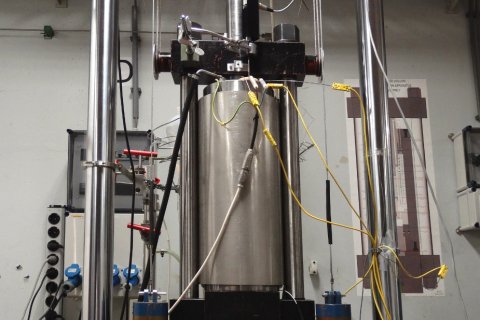
Triaxial compression apparatus (Shuttle vessel)
This internally heated, 100 MPa confining pressure vessel, is mounted on a standard Instron 1362 loading frame with a servo controlled positioning system. This machine can be used to deform the sample at a constant piston velocity, ranging from 10-7 to 10-2 m/s. The displacement is measured outside the vessel using a (Instron standard) linear variable differential transformer (LVDT), with 2 μm resolution. The apparatus is equipped with two (internally and externally located) load cells, each of 100 kN capacity. The confinement on jacketed samples is done by silicone oil, with the pressure being controlled by a servo pump, which also serves as dilatometer to carefully monitor the compaction/dilation of the sample under study. It is also facilitated with an internal heating furnace to locally heat up the sample, up to a maximum temperature of 150 °C. Recently, a high resolution stress-relaxation method was developed for simulating rheology at in-situ conditions (strain rates down to 10-9 s-1).
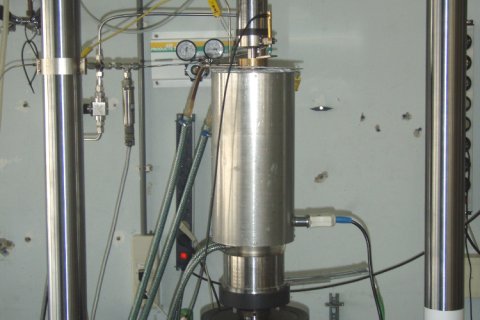
Uniaxial (oedometer) compaction cell (Monel vessel)
This cell is located in an Instron 8862 loading frame. The compaction cell can be equipped with an internal load cell (max. axial load 100 kN) or an acoustic emission sensor. Using an ISCO 65D syringe pump, fluids can be introduced into the sample at a maximum pressure of 137.9 MPa. In the past, the setup is being used to investigate the effects of CO2 on the mechanical behaviour of coal.

